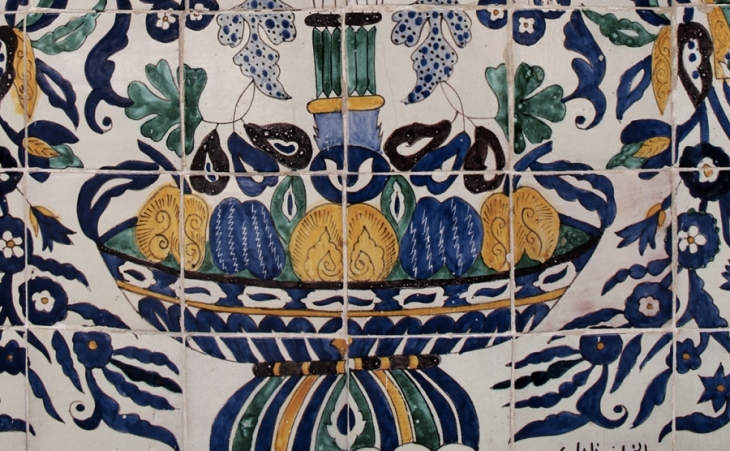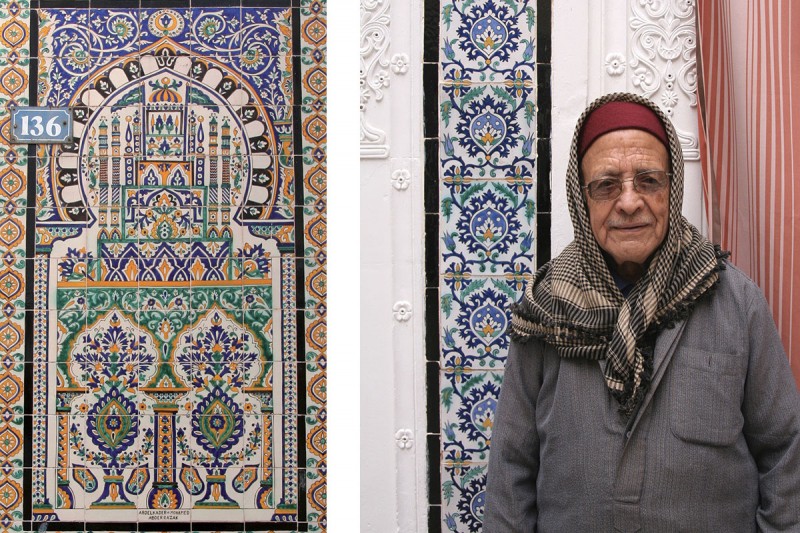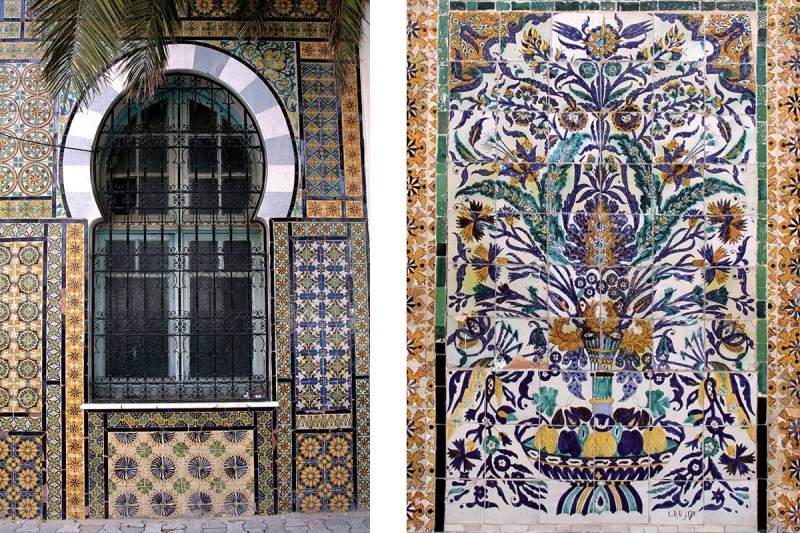At the beginning of the 20th century, Nabeul became the capital of Tunisian ceramics thanks to a few families of potters.
Nabeul, neighbouring town of Hammamet and capital of the
Cap Bon region, gave birth to several dynasties of ceramists: the Kharraz, Ben Sedrine, Abderrazak…
Thanks to these craftsmen, the 20th century saw the renaissance of the ancient Tunisian art of ceramics. In fact, the city of Tunis produced beautiful enamelled tiles and pottery in the 18th century. These ceramic tiles still line the walls of ancient palaces and madrasas –
Dar Othman, Dar Hussein, Dar Lasram, Medersa Slimeniya – while the beautiful jars and plates are exhibited in the
Bardo museum.
It all started when a pair of French ceramists, Joseph-Ferdinand and Elise Tissier established themselves in Nabeul in 1898 in order to create a factory. The new European techniques met the ancestral expertise of the potters of Nabeul, which were renowned for their pottery glazed in yellow and green.
A few years later, other entrepreneurs opened pottery factories in Nabeul: the Tunisian Jacob Chemla, then the Frenchman Pierre de Verclos.
Thus was born what was called back then the "artistic pottery": tiles and pottery covered with a glossy white glaze, decorated with the ancient designs of the 18th-century ceramics.
Jacob Chemla (whose sons, Victor and Mouche, became accomplished ceramists) had been in Nabeul for only a few years. But the factories of Tissier, Chemla and De Verclos trained many young Nabeulian potters. Some of them have had significant careers.
Among them, the twin brothers Hassan and Hassine Abderrazak ranked among the best ceramists of Nabeul. The following generation saw the names of Mohamed (Hassan’s son) and Abdelkader (his cousin) stand out. The latter is the author of the first design of the “Jar of Nabeul”, a monument situated at one of the city’s main crossroads.
Hassen Kharraz was the descendant of a dynasty of potters. After being an apprentice under Tissier, he was very successful as a ceramist and restored panels of the zawiya Sidi Sahbi (“Barber’s Mosque”) in
Kairouan. His son Gacem then his grandson developed and modernized the family business. The Kharraz shop in Nabeul city centre today sells designer ceramic items.
The brothers Aleya and Abdelkader Ben Sedrine too were the descendants of a potters’ family. They were initiated to the craft of “artistic pottery”. Aleya’s son, Mohamed, became a ceramist too and took over Tissier’s factory in 1948. It still existed at the beginning of the 2000’s.
Today, ceramic is a prominent feature of the city of Nabeul. Street signs, house numbers, storefronts, gift shops, big decorated jars… That is the legacy of these families who successfully combined innovation and traditional crafts.
Façade decorated by Abdelkader and Mohamed Abderrazak in Nabeul - Haj Mohamed Abderrazak in his house, decorated with hand painted tiles
The facade of the former Chemla factory in Nabeul - Tile panel restored by Hassen Kharraz, zawiya Sidi Sahbi in Kairouan
A jar from the Abderrazak workshop, Nabeul - Traditional yellow and green pottery of Nabeul
Books:
“Carreaux de lumière, l’art du Jelliz en Tunisie” (“Enamelled tiles, the art of Jelliz in Tunisia”, french/english) by Guillemette Mansour (Dad éditions)
“Les maîtres potiers de Nabeul” by Christian Hongrois (Editions de la Reinette)
“Nabeul, en vert et jaune” by A. Maurières and Ph. Chambon (Edisud)



